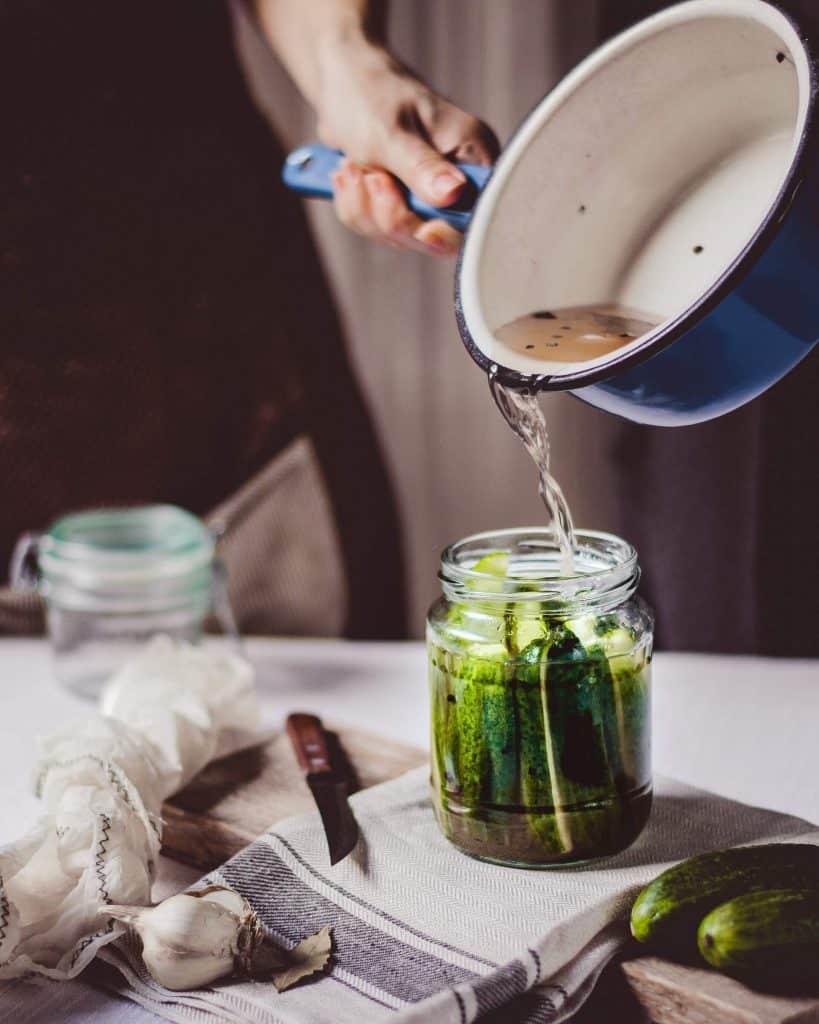Pickling is one of the most popular methods of food preservation. Your grandmother or mother’s pantry was probably full of fermented cucumbers and cabbage. Nowadays, pickles have become a field for culinary experiments and a way to discover new flavours.
Pickling is a set of chemical reactions which occur during the action of lactic bacteria. This process consists in conversion of sugars present in plant tissues into lactic acid, which in turn protects products from rotting. In this way, it becomes a specific preservative and allows food to remain in good condition for a long time
The mechanism is simple but time consuming. To succeed, you must be patient and diligent in preparing the right environment. At home, in order to pickle the chosen product, you need to keep it for a certain period of time in brine, that is, a solution of water and salt. Everything is important here – the amount of water, salt concentration or storage temperature will ultimately determine the final taste of the preserves.
It’s impossible to say unambiguously how much time should pass before the fermentation results in tasty, ready-to-eat pickles. The best indicator and verification method is your taste. So it’s worth starting your adventure with producing your own products in smaller steps, tasting the effects of your work a few times, making modifications and improving the proportions. Thanks to such experiences you will gain experience and develop a recipe which you will be able to pass on to future generations.
If you ever thought that salt is just salt – you were very wrong. White salt, rock salt, sea salt or pink Himalayan salt are just some of the assortment you’ll find on store shelves. You can use any of them for pickling, but the right choice will have a decisive impact on the nutritional value of your creation.
Iodized salt is processed and devoid of valuable ingredients. Sea salt runs the risk of having impurities in it, which sea water is unfortunately rich in. Rock salt and Himalayan salt are natural products, rich in micronutrients and will definitely be a better option.
As with salt, using the right water will affect the product you get as a result of your culinary endeavors. Tap water usually contains chlorine, whose role is to inhibit the growth of microorganisms. You can get rid of it by boiling, but at the same time you have to be aware that such water has no value.
Bottled spring water is, of course, different. Such water contains beneficial ingredients which are worth using. However, the saying “enough is enough” applies here. Minerals, can change the ph of silage, so it will not be advisable to use highly mineralized water.

Times when Polish tables were dominated by pickled cucumbers and cabbage are becoming obsolete. In the era of increased popularity and promotion of flavors of many countries and regions, no doubt Swedish fermented herring or Asian kimchi will find their way to your menu. Vegetables, fruits, herbs or mushrooms may serve as a base for pickles. In addition to the classics, you can use for example:
It all depends on your culinary imagination, your sense of taste, and your courage and willingness to experiment.
The chosen product, valuable salt, proper water and a jar or clay pot, which you will no doubt find in your home, are all the basic ingredients you need. Just make sure you add the right spices (garlic, horseradish, dill) and a little enthusiasm. Don’t hunker down on the couch – make your own pickles!
Main photo: CHUTTERSNAP/Unsplash.com